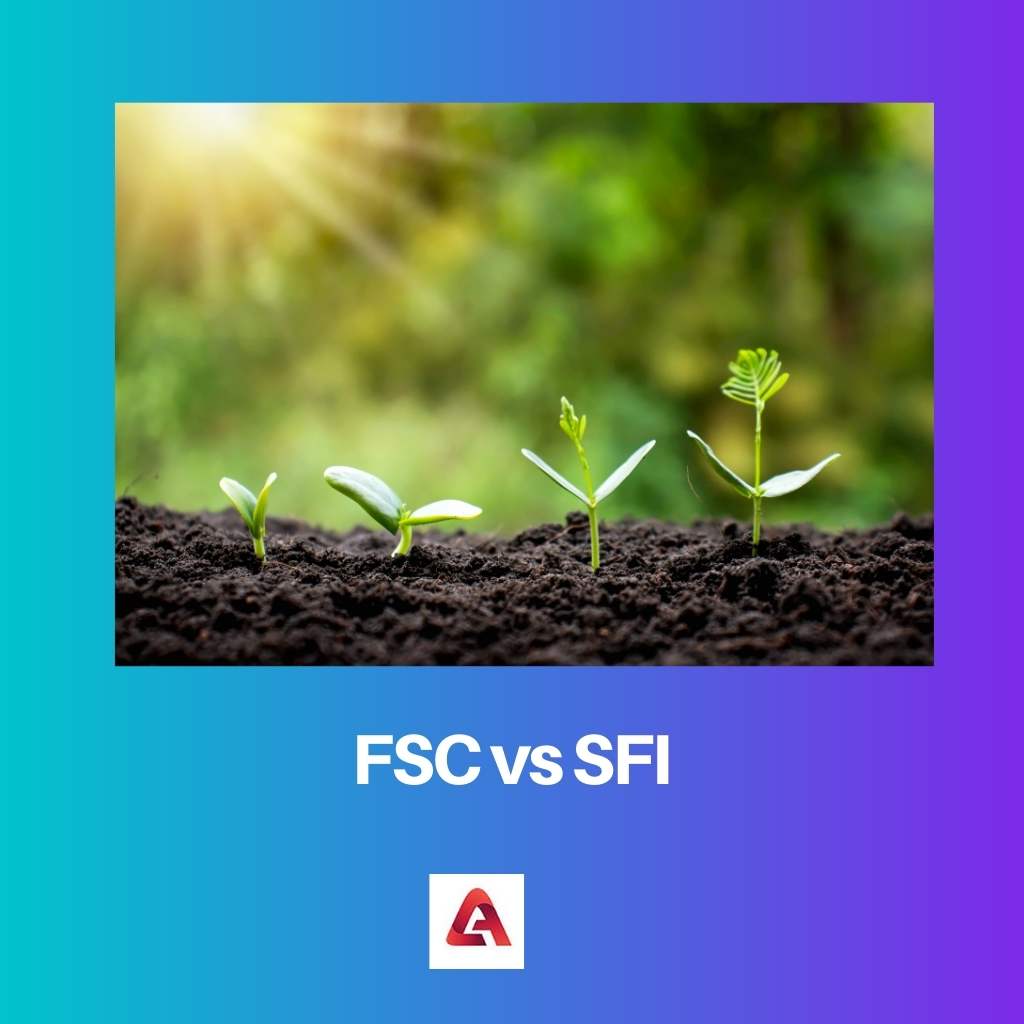Getting timber and wood from forests is not an easy task. They should meet some standards from certain standards. FSC and SFI play an important role in forest works.
Containing an FSC logo will help people in their forest business. Their certifications are very important as they work worldwide. One should register and get the certificate, and then they can start with their work.
Key Takeaways
- FSC certification emphasizes environmental, social, and economic sustainability in forest management.
- SFI focuses on responsible forestry practices, emphasizing research, conservation, and continuous improvement.
- FSC operates globally, whereas SFI primarily functions in North America.
FSC vs SFI
FSC stands for Forest Stewardship Council and is an international non-profit organization that promotes responsible management of the world’s forests. SFI stands for Sustainable Forestry Initiative and is another certification program that promotes sustainable forest management in North America.

FSC will assure the public that the timber products originating from a forest are responsible and sustainable, which is very important when it comes to selling wood to customers.
FSC papers can range from tissues to high-quality papers. This means that not all FSC papers can be recycled. Only the product will determine whether it can be recycled or not and not the FSC logo.
SFI products are powered tools. They help in achieving some shared goals such as climate action, biodiversity conservation, sustainable economic development, reduced waste, and future generation education.
They also consider all forest values. They also help people, companies, and organizations to come up with sustainable products and forest management resources to ensure a healthy tomorrow.
Comparison Table
| Parameters of Comparison | FSC | SFI |
|---|---|---|
| Expansion | Forest Stewardship Council | Sustainable Forestry Initiative |
| Evolution | 1993 | 1994 |
| Third-party audit | It requires approval from them | It does not require approval from them |
| Advantages | It will give protection to water quality | They help shipping and offshore companies |
| Disadvantages | Some wood will come from illegal sources | Loss of working forests and hazardous fuels |
What is FSC?
It is an international non-profit organization that is responsible for managing the world’s forests. They give certification to forests all over the world to see whether they meet the required social and environmental standards.
This certification helps the forest to get assurance that the products originating from the forest are very responsible and can be used sustainably. These things will be accomplished with the help of a chain of custody certification.
People who are going to start forests and plantations should get forest management certification from FSC. This program is good as it has reduced deforestation to a certain extent over the years.
This, in turn, reduced air pollution and respiratory infections. It also provided a positive impact on the health of local community people. There are some principles available in FSC. They comply with all laws, treaties, and agreements.
They will enhance the social and economic well-being of workers. They not only enhance the well-being of workers but also focus on enhancing the local community people.
Containing an FSC logo is very important for people coming to business as it will help others believe in the quality of the wood. And the best part about FSC woods is that they are sustainable, and it comes with sustainable certification.
What is SFI?
It is a sustainability organization situated in the United States of America and Canada. It will work on four pillars: standards, community, education, and conservation.
It also has two youth education initiatives: project learning tree and project learning tree Canada.
It is one of the independent legit non-profit organizations which focuses on advanced sustainability with forest-focused collaboration. Their products are 100% recyclable, and 90% of them are post-consumer waste.
It is one of the largest sustainable forest management programs across the world, as millions of forestlands in North America have been enrolled in their program.
Their management systems are mostly adopted, so they may or may not bring any performance changes when it comes to maintaining old forests and enhanced and exotic species some standards are required in SFI.
However, they are not very strict like FSI.
The downside of SFI is that it does not focus on the local community and indigenous people. The best part about SFI is there is no need for public reporting.
It requires some companies to monitor the impact in conservation management areas. The future is dependent on well-maintained forests.
Based on this, they have included support for educating youth in their programs. Through their learning, youth can become effective leaders in the future, which will benefit the world.
Main Differences Between FSC and SFI
- To get FSC, you need a third-party audit. On the other hand, there is no need for third-party audits in SFI.
- FSC focuses more on local communities and indigenous people. On the other hand, FSI does not focus on these things.
- FSI is highly transparent and contains strict rules for protecting forests. On the other hand, FSI is less transparent and has fewer rules for forest protection.
- FSC was first introduced in 1993. On the other hand, SFI was first introduced in 1994.
- The expansion of FSI is Forest Stewardship Council. On the other hand, the expansion of SFI is the Sustainable Forestry Initiative.
- The indicators used in FSI are ecological indicators. On the other hand, the indicators used in SFI are general and optional.



